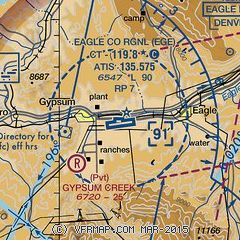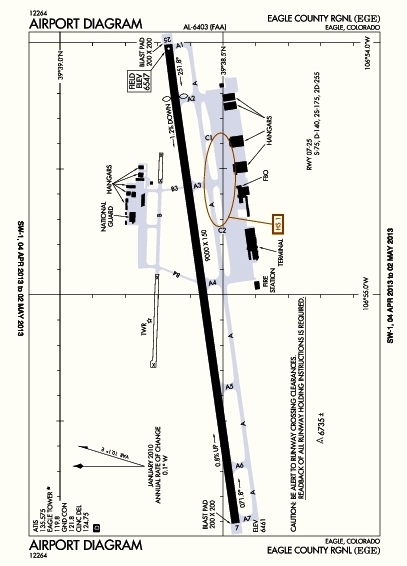Vail Colorado | Mountain Flying Adventure
Looking for a unique activity to add to your winter vacation in Vail, Colorado? Consider a Mountain Flying Adventure. We have three aircraft to choose from, and a variety of different adventures suited to both pilots and non-pilots.
Full Moon Night over the Rockies
Flying under a full moon through the Rockies can be a surreal experience. We’ll teach you some strategies that will keep you safe when flying through mountains at night. In this session we’ll generally take 2-3 hours and will visit 1-2 other airports depending upon time of year and conditions. This flight is especially fun in the winter when snow cover allows for extremely well lighted terrain at night.
Vail Valley Alpenglow
One of the most amazing experiences is to watch the sunset in the rockies at 10,000 feet. Board our aircraft and relax as we fly through the Vail Valley at sunset. Alpenglow tours depart 30 minutes prior to sunset each day, weather permitting.
Passes, Passes and more Passes
This 3/4 day adventure focuses on terrain flying and pass crossing. From Eagle, we depart southwest over Cottonwood Pass, cross McClure Pass, Kebler Pass, Monarch Pass or Marshall Pass and then return through either Hagerman Pass or Tennessee Pass. If you’re looking for something even longer with some radical terrain we can omit Tennessee Pass and instead fly Freemont Pass to Vail Pass before returning from the east. Along the route there are also numerous opportunities for landings at challenging airports.
Bragging Rights
If you don’t have much time and you’re looking for a quick and fun mountain flying experience try this route out. We depart Eagle to the east, and fly Tennessee Pass to Leadville, where we’ll land at North America’s highest airfield. After Leadville we cross Hagerman pass (weather permitting) and head for Glenwood Springs, known as North America’s most challenging airport before returning to Eagle. In one flight you’ve flown to the highest and then the most challenging airports in North America!
North Loop Intro to Mountain Flying
If you’re just getting your feet wet with mountain flying, our North route will give you a great opportunity to learn the basics as you circumnavigate the epic Flattop Wilderness. This route takes you North through mountain valleys to Steamboat Springs, then west along the northern edge of the Flattops to Craig. After Craig you head south towards Meeker where you can apply some new decision making skills and mountain flying considerations. After Meeker you’ll get some scenario challenges as you approach Rifle and on into Glenwood Springs before returning to Eagle. This route features terrain flying, route selection, valley flying, maneuvering in canyons, landings at several mountain airports.
Colorado Multi-Engine Rental

Alpine Flight Training now has a Piper Seneca 2, twin engine / multi-engine aircraft available for rental. The Aircraft features a recently redone interior, WAAS GPS, Speed Brakes, and is TurboCharged. Insurance checkout and experience minimums apply. Call 970-401-5105 for more information. Alpine Flight Training is located in Eagle Colorado, centrally located in the state of Colorado.
Multi-Engine Instructor Rating - Colorado
Adding a Multi-Engine Instructor rating is a huge asset for any instructor. Not only does it demonstrate the highest level of technical teaching proficiency, but allows an instructor to build valuable experience. To obtain an MEI rating, a flight instructor must already have his/her CFI rating and five hours of pilot-in-command time of whichever multi-engine plane he is instructing in. Alpine Flight Training’s MEI course covers multi-engine aerodynamics, systems & performance, engine-out operations & instrument flight through actual airborne practice and ground discussion.
Course Objectives:
The course is designed to provide the multi-engine pilot with the multi-engine flight training necessary to meet the (MEI) requirements. In order to be eligible for the Multi-Engine Instructor Rating you must fulfill the 15 hour Pilot in Command requirement.
Ground Training Includes:
aerodynamics and the principles of flight; aircraft systems; meteorology and weather data services; airspace; air traffic control; radio communications; federal aviation regulations; aero medical factors; aeronautical charts and associated publications; aircraft performance and limitations; basic and radio navigation; night flying procedures; flight planning; flight maneuvers; and ground operations.
Flight Training Includes:
preflight procedures; airport operations; takeoffs and landings; performance maneuvers; ground reference maneuvers; navigation and cross-country operations; basic instrument maneuvers; stalls; emergency operations; night operations; and pre/post flight briefings.
Requirements:
At least 15 hours of PIC multi-engine time
Hold a current CFI license
Hold a current commercial license with a multi-engine rating
Proficient in complex aircraft
Hold at least a 3nd class medical
This training program can normally be completed in as short as 3-4 days depending upon a pilot’s own instructional and muti-engine proficiency.
Contact Alpine Flight Training in Eagle Colorado at 970-401-5105 for more information.
Colorado Aviation Weather
Here's a pretty neat video about the mountain pass AWOS systems. We use these AWOS stations when we fly the Colorado Rockies. Knowing wind direction and velocity at the pass can help you to anticipate what side of the pass you'll receive and updraft or downdraft, and how severe. Visibility and ceiling information helps a pilot decide what the clearance through the pass is and whether it's a sane or insane idea to attempt to cross it.
If you want to learn more about aviation mountain weather and mountain flying, sign up for a one or two day mountain training seminar. Call 970-401-5105.
Colorado Multi-Engine Instructor
Alpine Flight Training provides accelerated training for all multi-engine ratings in Colorado.
* Multi-Engine Commercial or Private Add-On
* Multi-Engine Airline Transport Pilot
* Multi-Engine Instructor
Our primary multi-engine instructor is a 5000 hour ATP with extensive experience providing initial multi-engine training. We utilize a nicely equipped Piper Seneca II for our multi-engine Training.
Call 970-401-5105 for more information. We operate from Eagle County Regional Airport in Eagle, Colorado.
Finish your ATP rating - Single or Multi Engine

If you were one of the people who completed your ATP written test prior to the August 1, 2014 deadline then remember the written test results are only valid for 2 years. If you do have the written done and have the experience requirements met or nearly met we can help you. Alpine Flight Training can work with you to prepare for the ATP single engine or ATP multi-engine rating. We have recent experience preparing students for the ATP, and can successfully prepare you for the airline transport pilot checkride in either a single engine Piper Archer or a Multi-Engine Piper Seneca II.
The ATP training can be completed in a week, and generally involves 8-15 hours depending upon the students instrument and multi-engine currency. We conduct the training at Eagle County Regional Airport in Eagle, Colorado. Our school is located near the Colorado Ski Resorts of Vail and Beaver Creek. Call 970-401-5105 for more information.
EGE Fly-In 2015 - June 20
Saturday June 20th join us at the Vail Valley Jet Center for the Central Rockies best fly-in. $4.18 per gallon at Eagle Airport on Saturday June 20th! Come to the Eagle County Airport Fly-In hosted by the Vail Valley Jet Center!
http://vailvalleyjetcenter.cmail1.com/t/ViewEmail/r/2A2D70C8C96FB3862540EF23F30FEDED/3488885CE36997216E86459A008B4B98
Colorado Multi-Engine Training
Alpine Flight Training is happy to announce we've added to the advanced ratings we can provide. With the addition of a Piper Seneca, we can now provide Multi-Engine Private and Commercial Ratings as well as Multi-Engine Instructor Ratings. Alpine Flight Training now offers Multi-Engine training in a PA-34-200T Piper Seneca. This new addition to our fleet offers 215HP(turbocharged) per side, known ice system, 6 passenger, speed brakes, Garmin WAAS System, HSI, counter-rotating props and a single engine ceiling over 13,400ft.
Mountain Flying Basics - Crosswind TO & Land
Statistically, the largest percentage of GA aircraft accidents are related lack of pilot proficiency in dealing with crosswinds resulting in loss of control during takeoff or landing. As the days get longer and warmer the snow begins to melt. This melting snow causes evaporative cooling that can create strong local winds at many mountain airports. In fact, it's not uncommon for winds aloft to be relatively mild and surrounding airports to be calm while Eagle, Aspen, or Leadville are 20 gusting to over 30. If you haven't practiced your crosswind technique in a while this is a perfect time of year to get with an instructor and sharpen those skills.



